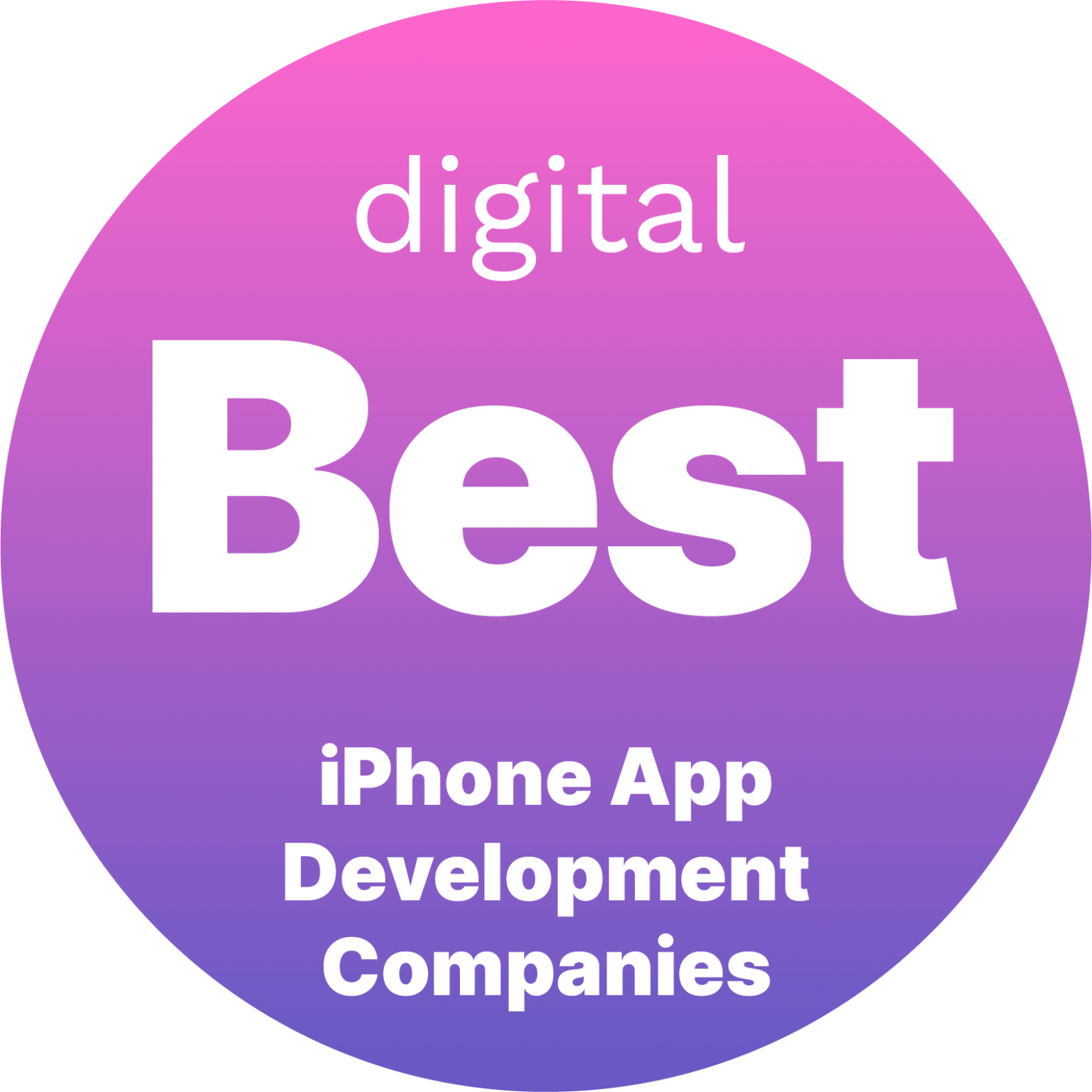After reading this article, you’ll:
• Understand the massive opportunity in the $224 billion creator economy and how mobile apps are essential for capturing this market
• Learn the key features and monetization models needed to build successful creator economy apps
• Discover actionable strategies for developing mobile solutions that empower creators while generating sustainable revenue

The Creator Economy Revolution: Why Mobile Apps Matter Now
The creator economy has exploded into a $190 billion market in 2024 and is on track for $224 billion in 2025. With over 200 million people considering themselves creators, businesses have an unprecedented opportunity to build mobile applications that serve this rapidly growing market. The shift is clear: 30% of 18-24 year olds and 40% of 25-35 year olds call themselves content creators, fundamentally changing how we think about work, creativity, and monetization.
For businesses looking to tap into this market, mobile apps aren’t just an option—they’re essential. Short-form video is expected to account for roughly 90% of internet traffic by 2025, and creators need sophisticated mobile tools to capture, edit, and monetize their content on the go. As a leading mobile app development company, we’ve seen firsthand how the right mobile strategy can transform a creator platform from a simple tool into a thriving ecosystem.
Understanding the Creator Economy Landscape
The Numbers Tell a Compelling Story
The creator economy’s growth trajectory is staggering. Instagram has the most creators (more than 30 million), followed by YouTube with over 12 million creators. But here’s the critical insight for businesses: Roughly 0.5% of creators make over $1 million annually, while those earning between $500K-1M are nearly 1.7% of the creator economy. This concentration of earnings presents both a challenge and an opportunity for mobile app developers.
The monetization landscape is evolving rapidly. Patreon creators get paid between 88% to 95% of their subscriptions. OnlyFans creators take home 80% of their earnings. These high revenue shares are setting new standards that businesses must consider when building creator-focused mobile applications.
The Mobile-First Reality
Today’s creators are inherently mobile. They’re shooting content on smartphones, editing on tablets, and managing their businesses from wherever inspiration strikes. The efficiency of an application in the gig economy is achieved through real-time updates. Feedback on job availability, task acceptance, earnings, and schedules would inform workers’ decision-making. This need for immediacy and flexibility makes mobile apps not just convenient but crucial for creator success.
Essential Features for Creator Economy Mobile Apps
1. Seamless Content Creation and Editing Tools
Modern creators demand professional-grade tools that work flawlessly on mobile devices. Your app should include:
- Intuitive video and photo editing capabilities: Filters, transitions, and effects that rival desktop software
- Real-time collaboration features: Allow creators to work with team members remotely
- Cloud integration: Automatic backup and cross-device synchronization
- AI-powered enhancements: Smart editing suggestions and automated improvements
As experts in iOS app development and Android app development, we understand the technical challenges of delivering desktop-quality features on mobile platforms.
2. Robust Monetization Infrastructure
Creators have shifted from being paid by platforms like YouTube with ad revenue shares in exchange for bringing in an audience to the platforms, to being paid by brand sponsors on Instagram and Snapchat in exchange for their reach to an audience they access through the platforms, to being paid by fans via patronage or tipping or ecommerce in exchange for entertainment and community beyond the platforms.
Your mobile app should support multiple revenue streams:
Subscription Models: For macro creators—those with over 250,000 followers—subscriptions are a dominant revenue source, with 63% of respondents citing them as a key income channel. Implement tiered subscription options with exclusive content access.
Direct Tipping and Donations: Around 50% of creators use platforms like Patreon, Buy Me a Coffee, Ko-fi to get tips from their biggest fans. Integrate one-time payment options with low transaction fees.
Digital Product Sales: Enable creators to sell courses, ebooks, presets, and other digital goods directly through the app.
Brand Partnership Tools: Built-in features for managing sponsorships and tracking campaign performance.
3. Community Building and Engagement Features
The most successful creator platforms understand that community is currency. Essential features include:
- Live streaming capabilities: Let customers breeze through checkout by making it easy for them to input and reuse their payment information
- Direct messaging and group chats: Foster deeper connections between creators and their most engaged fans
- Exclusive content gates: Members-only areas that incentivize subscriptions
- Interactive elements: Polls, Q&As, and challenges that boost engagement
4. Analytics and Insights Dashboard
Creators are entrepreneurs, and they need business intelligence tools:
- Revenue tracking: Real-time earnings reports across all monetization channels
- Audience analytics: Demographics, engagement patterns, and growth trends
- Content performance metrics: Which posts drive the most engagement and revenue
- Predictive insights: AI-powered recommendations for optimal posting times and content types
Technical Considerations for Creator Economy Apps
Performance and Scalability
User-friendly design is a cornerstone of successful gig economy apps. Platforms like TaskRabbit and DoorDash prioritize intuitive interfaces, ensuring users can navigate seamlessly without requiring technical expertise. Your creator economy app must handle:
- High-resolution media processing: 4K video uploads and editing without lag
- Concurrent user scaling: From hundreds to millions of users without performance degradation
- Global CDN integration: Fast content delivery regardless of geographic location
- Offline functionality: Enable content creation even without internet connectivity
Security and Privacy
With creators entrusting their livelihoods to your platform, security is paramount:
- End-to-end encryption: Protect sensitive creator and fan data
- Secure payment processing: PCI compliance and fraud prevention
- Content protection: Digital rights management for premium content
- Privacy controls: Granular settings for what creators share and with whom
Our experience in FinTech mobile app development has taught us that financial security features are non-negotiable when handling creator earnings.
Cross-Platform Consistency
Cross-platform compatibility also benefits users by allowing workers to switch between devices without forfeiting functionality or losing data. Ensure your app provides:
- Unified experience: Consistent UI/UX across iOS and Android
- Web companion: Desktop access for more complex tasks
- API ecosystem: Allow third-party integrations and tools
- Progressive web app options: Lightweight alternatives for emerging markets
Monetization Models That Work
The Subscription Economy
Offering subscriptions forms a highly sought-after method to secure stable, recurring revenues for a creator. Successful subscription models include:
- Platform subscriptions: Users pay for premium features and tools
- Creator subscriptions: Fans subscribe to individual creators
- Hybrid models: Combination of platform and creator subscriptions
Transaction-Based Revenue
 Subscription-based earnings for US creators are set to rise significantly, with revenues projected to reach $350 million by 2025, reflecting 27.4% year-over-year growth. Consider these transaction models:
Subscription-based earnings for US creators are set to rise significantly, with revenues projected to reach $350 million by 2025, reflecting 27.4% year-over-year growth. Consider these transaction models:
- Commission on creator earnings: typically 5-30% depending on services provided
- Payment processing fees: 2.9% + $0.30 is standard
- Premium feature upsells: Advanced analytics, priority support, enhanced tools
Advertising and Sponsorships
While creators are moving away from traditional ad models, strategic advertising implementation can still generate revenue:
- Native advertising: Seamlessly integrated sponsored content
- Creator marketplace: Connect brands with relevant creators
- Performance-based commissions: Earn from successful brand partnerships
Building for the Future: Emerging Trends
AI and Machine Learning Integration
The future of creator economy apps lies in intelligent automation:
- Content optimization: AI that suggests the best hashtags, captions, and posting times
- Automated editing: One-click enhancements based on content type
- Personalized discovery: Matching creators with their ideal audience
- Predictive analytics: Forecasting trending content and monetization opportunities
As specialists in cutting-edge mobile solutions, we’re seeing AI transform how creators work and earn.
Web3 and Blockchain Integration
The next wave of creator economy apps will likely include:
- NFT marketplaces: Allowing creators to mint and sell digital collectibles
- Decentralized storage: Ensuring content ownership and permanence
- Smart contracts: Automated royalty distributions and licensing
- Cryptocurrency payments: Lower fees and global accessibility
Virtual and Augmented Reality
Immersive experiences are becoming increasingly important:
- AR filters and effects: Custom branded experiences
- Virtual events and concerts: New revenue streams for creators
- 3D content creation: Tools for building metaverse experiences
- Mixed reality collaboration: Remote creation in shared virtual spaces
Best Practices for Launching Your Creator Economy App
1. Start with a Niche
Emerging opportunities lie in niche communities. Rather than trying to compete with Instagram or TikTok immediately, focus on:
- Specific creator types: Musicians, artists, educators, fitness instructors
- Unique monetization models: Innovative ways creators can earn
- Underserved markets: Geographic regions or demographics often overlooked
2. Prioritize Creator Success
Your app’s success depends entirely on creator success. This means:
- Generous revenue sharing: Aim for 80%+ creator revenue share
- Transparent policies: Clear terms of service and payout schedules
- Creator education: Resources and tutorials for maximizing earnings
- Responsive support: Dedicated creator success teams
3. Build Community First, Monetization Second
Once creators are monetizing, they want to move to the trust layer, which takes the audience to a private community where they can communicate directly with the creator. Focus on:
- Organic growth tools: Help creators find and retain their audience
- Engagement features: Tools that foster genuine connections
- Value creation: Ensure creators can deliver unique experiences
- Gradual monetization: Introduce paid features as communities mature
4. Iterate Based on Feedback
The creator economy evolves rapidly. Stay ahead by:
- Regular creator surveys: Understand evolving needs and pain points
- A/B testing: Continuously optimize features and user flows
- Beta programs: Let power users test new features first
- Data-driven decisions: Use analytics to guide product development
Challenges and Solutions
Challenge 1: Platform Dependency
If you have all of your monetization tools on one platform, you’re even less likely to move to another platform.
Solution: Build portability into your platform. Allow creators to:
- Export their content and data
- Maintain ownership of their audience relationships
- Integrate with other platforms via APIs
- Diversify their presence across multiple channels
Challenge 2: Income Inequality
While the creator economy offers big chances, it also comes with problems that can make it hard for creators to keep making money.
Solution: Implement features that help smaller creators succeed:
- Discovery algorithms that surface diverse content
- Monetization tools accessible at lower follower counts
- Educational resources for growth and engagement
- Collaborative features that allow creators to cross-promote
Challenge 3: Content Moderation at Scale
As your platform grows, maintaining quality and safety becomes challenging.
Solution: Invest in:
- AI-powered content moderation
- Community reporting systems
- Clear content guidelines
- Human review for edge cases
- Creator appeals processes
Getting Started: Your Roadmap to Success
Phase 1: Market Research and Validation (Months 1-2)
- Identify your target creator segment: Survey potential users about their needs
- Analyze existing solutions: Understand what’s working and what’s missing
- Define your unique value proposition: What makes your app different?
- Create detailed user personas: Understand your creators’ goals and challenges
Phase 2: MVP Development (Months 3-6)
- Core feature development: Focus on must-have features only
- Basic monetization implementation: Start with one revenue model
- Beta testing program: Recruit 50-100 creators for feedback
- Iterative improvements: Refine based on user feedback
Phase 3: Launch and Growth (Months 7-12)
- Soft launch: Release to a limited market first
- Creator acquisition: Implement referral programs and incentives
- Feature expansion: Add requested features based on user data
- Monetization optimization: Test and refine revenue models
Phase 4: Scale and Expand (Year 2+)
- Platform expansion: Add web and additional mobile platforms
- International markets: Localize for global creator communities
- Advanced features: AI, AR, and blockchain integrations
- Ecosystem development: APIs and third-party integrations
Partnering for Success
Building a successful creator economy app requires expertise across multiple domains—from intuitive UX/UI design to complex payment processing systems. The technical challenges are significant, but the opportunities are even greater.
At Dogtown Media, we’ve helped numerous businesses navigate the complexities of mobile app development. Our experience spans from working with VC-funded startups to Fortune 500 companies, giving us unique insights into what makes mobile apps successful in competitive markets.
The Creator Economy Is Just Beginning
The creator economy represents one of the most significant shifts in how people work and earn in the digital age. When you talk about the market size of the creator economy you have to look at the individual pieces that make up the whole puzzle. For businesses ready to build the tools that empower this new generation of entrepreneurs, the opportunity is massive.
Success in this space requires more than just technical excellence—it demands a deep understanding of creator needs, a commitment to fair monetization, and the agility to evolve with a rapidly changing landscape. The businesses that succeed will be those that view creators not just as users, but as partners in building the future of digital commerce and community.
The time to act is now. With the creator economy projected to reach nearly half a trillion dollars by 2027, businesses that establish themselves as creator-friendly platforms today will be the market leaders of tomorrow.
Frequently Asked Questions
Q: What is the minimum budget needed to develop a creator economy mobile app?
A: The budget for developing a creator economy app varies significantly based on features and complexity. A basic MVP with core features (content upload, simple editing, basic monetization) typically starts around $50,000-$100,000. However, a full-featured platform with advanced editing tools, multiple monetization options, and robust analytics can range from $250,000 to $500,000+. The key is to start with essential features and scale based on user feedback and revenue.
Q: How long does it take to develop and launch a creator economy app?
A: Development timeline depends on the app’s complexity and feature set. A basic MVP can be developed in 3-6 months with a focused team. A more comprehensive platform with advanced features typically takes 9-12 months from concept to launch. This includes time for market research, design, development, testing, and initial marketing preparation. Post-launch iterations and feature additions are ongoing.
Q: What are the most important features to include in an MVP?
A: For a creator economy app MVP, focus on: 1) Simple content upload and basic editing tools, 2) User profiles and follower system, 3) One primary monetization method (usually subscriptions or tipping), 4) Basic analytics dashboard, 5) Secure payment processing, and 6) Simple content discovery/feed. These core features allow you to validate your concept while keeping development costs manageable.
Q: How do we compete with established platforms like Instagram or TikTok?
A: Don’t try to beat them at their own game. Instead, focus on: 1) Serving a specific niche of creators better than anyone else, 2) Offering superior monetization options and revenue shares, 3) Providing specialized tools for your target creators, 4) Building stronger creator-fan relationships through unique features, and 5) Being more responsive to creator needs and feedback. Many successful creator platforms started by serving niches ignored by major platforms.
Q: What percentage of revenue should we share with creators?
A: The industry is moving toward creator-friendly revenue shares. Leading platforms offer 80-95% of earnings to creators. While this might seem high, remember that successful creators attract more creators and users, growing your platform’s overall revenue. Start with a generous share (aim for at least 80%) and focus on volume and additional revenue streams rather than taking large cuts from creator earnings.
Q: Should we build native apps or start with a progressive web app?
A: For creator economy apps, native development is usually the better choice, especially if you’re including features like video editing, live streaming, or AR filters. Native apps provide better performance, access to device features (camera, microphone, storage), and a superior user experience. However, you might consider starting with a web platform for the creator dashboard and analytics while focusing native development on the mobile creation tools.
Resources and Further Reading
Internal Resources:
- Mobile App Development Services
- iOS App Development Expertise
- Android App Development Solutions
- FinTech App Development
- IoT and Connected Apps
Sources:
- “20 Creator Economy Statistics That Will Blow You Away in 2023” – Influencer Marketing Hub
- “Content Creator Economy & Growth Creator Statistics Report 2025” – VdoCipher
- “41 Mind-Blowing Creator Economy Stats That Marketers Can Learn From” – HubSpot Blog
- “The Creator Economy Market Size in 2023” – Influencers Club
- “What I’ve learned from a year-long dive into the Creator Economy” – Hashtagpaid
- “The creator economy—how brands can better connect with influencers” – Ad Age
- “The State of the Creator Economy | Definition, Growth & Market Size” – Influencer Marketing Hub
- “Turning clicks into cash: why the Creator Economy is booming” – Euronews
- “The Creator Economy Survey by The Influencer Marketing Factory” – Globe Newswire
- “The Creator Economy Explained: How Companies Are Transforming The Self-Monetization Boom” – CB Insights Research
- “Build for the creator economy with Stripe” – Stripe
- “The 2025 Ultimate Guide to the Creator Economy” – Mighty Networks
- “Creator economy: Own your audience with subscriptions” – Recurly
- “SignalFire’s Creator Economy Market Map” – SignalFire
- “TikTok, Patreon launch new subscription features as creator monetization heats up” – eMarketer
- “Roundtable: what’s next for the new creator economy?” – Mailchimp Courier
- “How big is the creator economy?” – TapeReal
- “How does the Creator Economy work? (Part III: Platforms)” – Creator Economy Newsletter
- “What Is the Creator Economy?” – Endavo Media
- “The Rise of Gig Economy Platforms and Their Reliance on Mobile Apps” – DXB Apps





